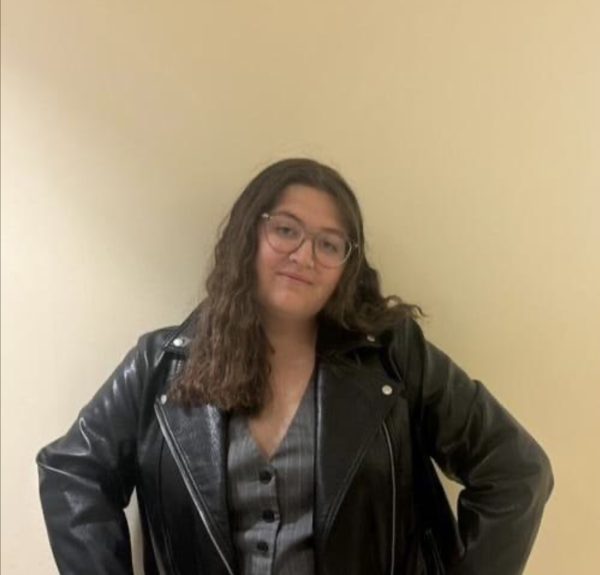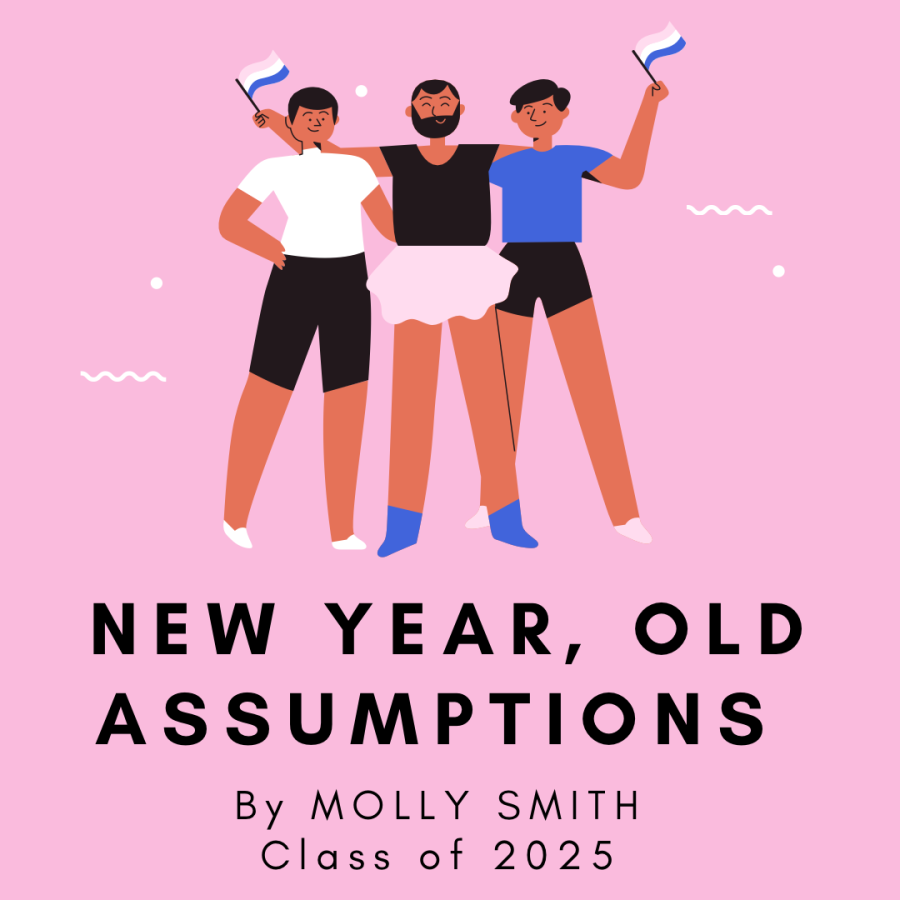New Year, old assumptions
I was able to collect a few outside opinions from non-cisgender peers. They said a few things help them feel comfortable and validated in the classroom setting.
But gender identification is separate from the mere way one dresses. If I dip a carrot in ranch dressing, the carrot is still a carrot.
An economic class sees its tenth lecture of the school year, invested students spaced out in rows. Student A was assigned female at birth, and still identifies as a female. Student B was assigned male at birth, and still identifies as a male. This makes these two students cisgender, which means they identify as the gender they were assigned at birth.
Student C, however, does not feel comfortable with the gender they were assigned at birth. They are nonbinary, merely one of the many non-cisgender identities. A nonbinary person does not fit within the socially placed binary of male or female. Their masculine clothing makes the teacher think he can categorize them as a man.
Student D is next to Student C and is gender fluid. In other words, they do not have a fixed gender and may change identities. In January, he may identify as a man. Come March, and perhaps she identifies as a woman. Maybe in August, they indentify as nonbinary like the student to the left. Student D has a feminine way of dressing, which makes the teacher think he can categorize this student as a woman.
Student E looks to the left and does not feel exclusively comfortable with any of the identities. They are genderqueer, an umbrella term for those whose gender indentity isn’t limited to male or female. They could be neither, both, one the next day and a different the following, etc. It is okay that they do not have a specific label. They, too, dress in a feminine mannerism, which is why the teacher categorizes them as female.
But gender identification is separate from the mere way one dresses. If I dip a carrot in ranch dressing, the carrot is still a carrot.
The issue here does not lie in students C-E, rather the teacher. The teacher seems to believe that since students C-E have not told the teacher or administration about their gender identity, their presentation tells all.
The teacher then calls a speed challenge, separating the class with girls on the left and guys on the right. At the beginning of this address, he addresses the class as “ladies and gentlemen.”
Student C, whose conservative parents are unsupportive of the LGBTQ+ community and is terrified to come out, silently feels unworthy.
Student D, who has heard the seniors cracking gender identification jokes at lunch and is terrified to come out, silently feels invalidated.
Student E, who simply does not feel ready to come out, silently feels unseen.
These three students are closeted, a term used for those in the LGBTQ+ community that have not come out.
But the basic assumption that, unless specified, a student is either a male or a female, sticks.
Cisgender students line up like ducks in a row. They confidently move to their side of the room, no intense feelings. They were going to learn economics and they were going to do it comfortably.
But not everybody was able to relate to this feeling. Could the teacher not have come up with a better, healthier way of division?
“First letter of your favorite book. A-L left, M-Z right.”
“Favorite class. History and math left, science and English right.”
The closeted students would not have had to feel fear or invalidation. They would have simply chosen one and applied.
The Trevor Project is a crisis lifeline for LGBTQ+ youth. In a survey they conducted, 44% of transgender youth accounted for has had thoughts of suicide over the past year. To make matters worse, GLSEN’s conducted survey shows that 75% of transgender youth feel unsafe going to school.
With the constant invalidation and dangerous assumptions, these statistics do not seem faulty.
With my own observations, I have witnessed four of my eight classes undergo gender assumptions. In at least three out of those four classes, there has been at least one non-cisgender student whose teacher assumed their gender.
To imagine how they must have felt is to get a sneak peak of a nightmare I know nothing about.
I was able to collect a few outside opinions from non-cisgender peers. They said a few things help them feel comfortable and validated in the classroom setting.
“Give out a form at the beginning of the year asking kids their pronouns and preferred name.”
“Use more inclusive and gender neutral language when addressing people in class.”
“Ask the person how they feel comfortable, ask if you can intervene in case a teacher does [or] says something that might make them feel bad.”
“Just let [the student] know that you are here to give a hand, because we feel very lonely, more at that age.”
If schools are going to push the principle of respect onto students, it is of utmost importance that they respect the students themselves. The best way to do this is to drive the assumptions out of the classrooms.
Every student I know has been told to not judge a book by its cover. But gender assumptions do exactly that. Classrooms will only know true inclusivity and safeness if they are aware that closeted non-cisgender students exist.
It is quite similar to school itself-even if you do not completely understand a topic, you apply it. You keep an open mind. And transgender students deserve that same respect to feel welcomed.
Change your addresses to make them gender neutral, and make it known whenever possible that you support non-cisgender students. Perhaps one student will go home feeling a bit better than when they left.



